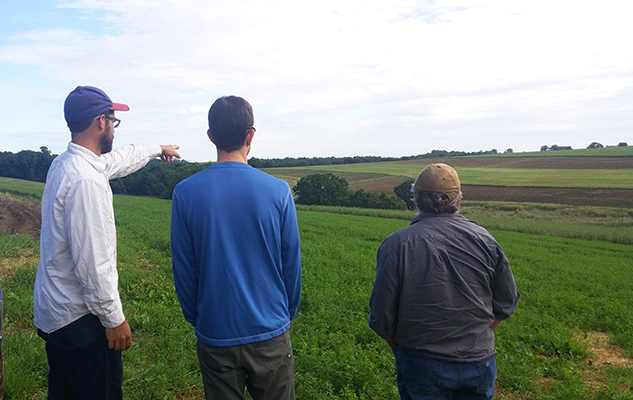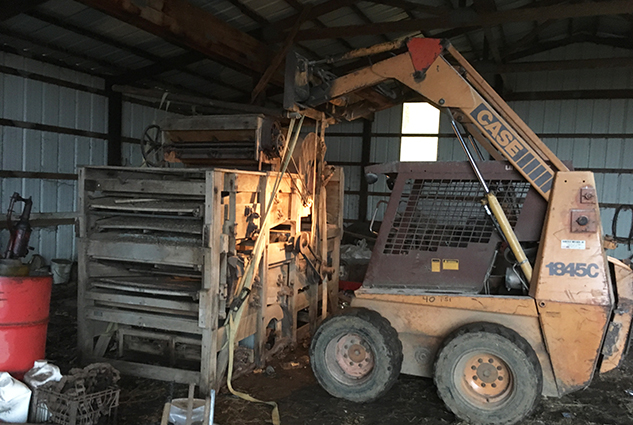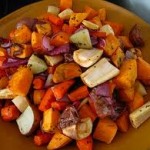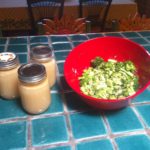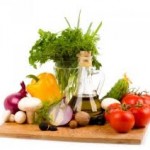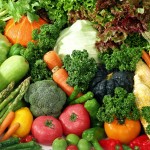This blog is about my daughter and her husband, in rural Wisconsin. They are Organic Farmers and are working to change the way farming is managed in America!! Enjoy the read. Oh yeah, that’s our darling grandson, Henry, taking the nap.
By Halee Wepking, Meadowlark Organics and Bickford Organics
Hello! Halee Wepking here, trying to do what I can to help out my husband, John, who is currently turning over windrows of hay that was rained on yesterday in hopes that the predicted storm will miss us tonight and they can bale dry hay tomorrow. As they say, make hay when the sun shines, and get to work when your toddler’s napping!
I don’t spend much time on a tractor these days, but I have been spending most of our son’s naps working on our packaging copy, marketing plan, and coordinating a few wholesale orders for a local grocery store, catering company, and independent bakers who use our flour. Though we’re just a few years into growing small grains, we have made many valuable connections with bakers, larger retail stores, distilleries, and grain buyers.
We have met several artisan bakers who are very enthusiastic about baking with local grains. The head baker at Madison Sourdough has been milling our Sungold Spelt berries to make a honey brioche for the bakery. We recently took another baker who is just getting started on a tour of our fields of wheat, and it is always exciting to think about the potential our grain has to become nourishing food.
John touring the fields with the baker from Origin Breads and our miller from Lonesome Stone Milling.
We have also connected with a company in Viroqua called Plovgh that works directly with farmers and processors to supply organic and specialty grains to buyers. It has been encouraging talking to them about the demand they see for what we are growing. This year we have Red Fife, Emmer, Boles, Warthog, Expedition, and Sungold Spelt in our fields and they are interested in all of it. We’ve received more encouragement from our friend Anders Gurda, who heads up OGRAIN (the Organic Grain Resource and Information Network) at the University of Wisconsin. Whether they see small grains as a valuable conservation effort or an artisan food product, people who are excited about small grains are really excited about them. We are beyond lucky to have so many resources and people who are passionate about small grains in our community.
The vision for our farm business has evolved greatly over the last couple of years and will continue to do so, I’m sure. When we started working for Paul, he already had an established market selling feed to small, organic livestock producers and Amish communities where hand-milking a small herd of dairy cows is common practice. Paul still spends most of the winter trucking loads of hay, baleage, and grain up to Amish country. His commitment to the smaller customers is admirable, and also a smart business move, though it means he isn’t spending his winters relaxing in Arizona.
Following his example, we are establishing another aspect of the farm’s business by selling our food-grade small grains in a similar way. This year we received a Value Added Producer Grant from the USDA to direct market our flour and grain. We have partnered with Lonesome Stone Milling, who does our toll milling, but we maintain ownership of the grain from field to flour. It’s another piece of the farm-to-table movement, connecting consumers with the farmers who grow the grain for their flour and cornmeal. It is certainly more work than selling semi-loads to large grain buyers, but selling to bakers, co-ops, and local distilleries solidifies our relationship with our local food economy.
For us it is important to have several different markets for our small grains. We don’t have the ability right now to direct market all of our grain as flour, so our connections with Plovgh, larger grain processors, and flour mills are key to making sure our product moves off our farm and we get paid. We have found, though, that with all of the small mills, bakeries, and distilleries that are popping up, and with the growing demand for organic food-grade small grains in general, there is a hole in the supply chain. Those buyers, both small and large, want and need impeccably clean grain, and many farmers who might be interested in growing small grains don’t have the proper on-farm cleaning and, most importantly, on-farm storage to make it a realistic addition to their rotation.
File this one under, “Things you can find at an auction and have to dig out of the back of a shed.” A four-screen seed cleaner!
Having heard this barrier from both sides, farmers and buyers, we have seen an opportunity to help our local grain economy by taking on the (enormous) task of building a granary. Our farm is positioned well on a major highway, with a good deal of existing infrastructure, and with a boss who is not afraid of debt when the numbers are promising. Our goal is to be able to do custom cleaning and provide storage for other organic grain farmers in the area. There is room to expand into our own flour mill as well (get in touch with us if milling is your passion—we can’t do it all ourselves!). We are optimistic that this granary will help us and others access markets that are just out of reach and encourage other organic farmers in the area to add small grains into their rotation.
Ideally we will be strengthening the already existing network of researchers, farmers, buyers, and processors in our region, and boosting our local economy through this endeavor. Stay tuned for updates on the granary as we progress—even though there is wheat to harvest and hay to make, we’re committed to getting this project going this year.
***
About this series: The National Young Farmers Coalition and King Arthur Flour present Heart and Grain, new blog and film series profiling three pioneering young grain farmers. While all farmers face challenges, the high start-up costs associated with grain farming can make it an especially difficult field to enter for new and young farmers. Learn more about the series here.
About our series sponsor: Farmers are at the heart of baking. That’s why King Arthur Flour proudly supports the National Young Farmers Coalition and its mission of empowering the next generation of grain growers. As America’s appetite for sustainable food increases, King Arthur Flour is dedicated to helping farms grow with demand and strengthening people’s connection to real food.

